Abstract
Pedigrees used in the analysis of genetic or medical data are usually ascertained from sources subject to a variety of errors including misidentification of individuals, faults in historical documents or record linkage, nonpaternity, and unidentified adoption. Genetic markers can be used to verify putative family and pedigree data through the search for inconsistencies, or genetic exclusions, between putative parents and offspring. The probability of observing an exclusion given the occurrence of an error depends upon the gene frequencies at the loci under study and the forms of error. In addition, inconsistencies can arise from laboratory errors in marker determination. Together, these problems make the proper statistical analysis of such data desirable. Here we give a model that specifies the combined effects of various kinds of pedigree error along with genetic marker error. This model allows the maximum-likelihood estimation of the rates of various forms of pedigree error and laboratory error from genetic marker data collected on putative families. The method is illustrated by applying it to data obtained from a South Pacific island population, Tokelau. From the observed distribution of genetic marker inconsistencies between the parents and offspring of putative families, derived from the extensive genealogy of this population, we are able to estimate that the error of a paternal link is 4%, the error of a maternal link is zero, and the overall system typing error is 1%.
Full text
PDF
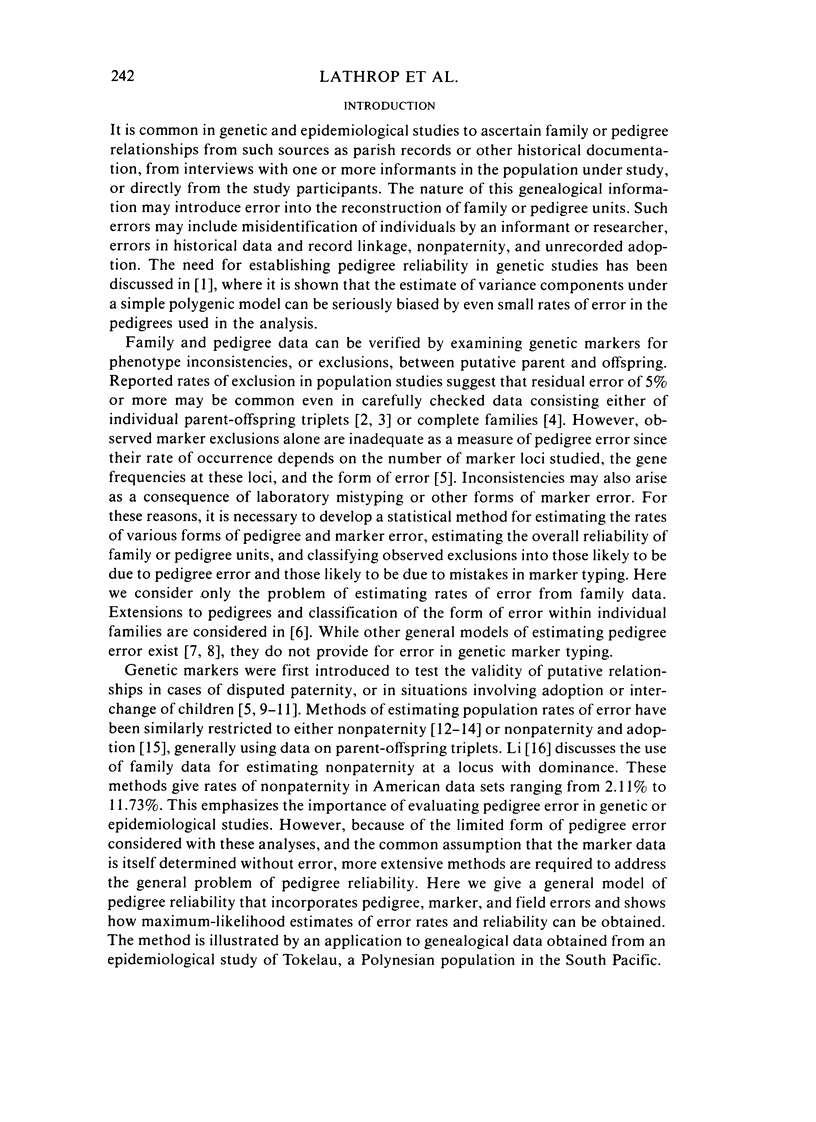
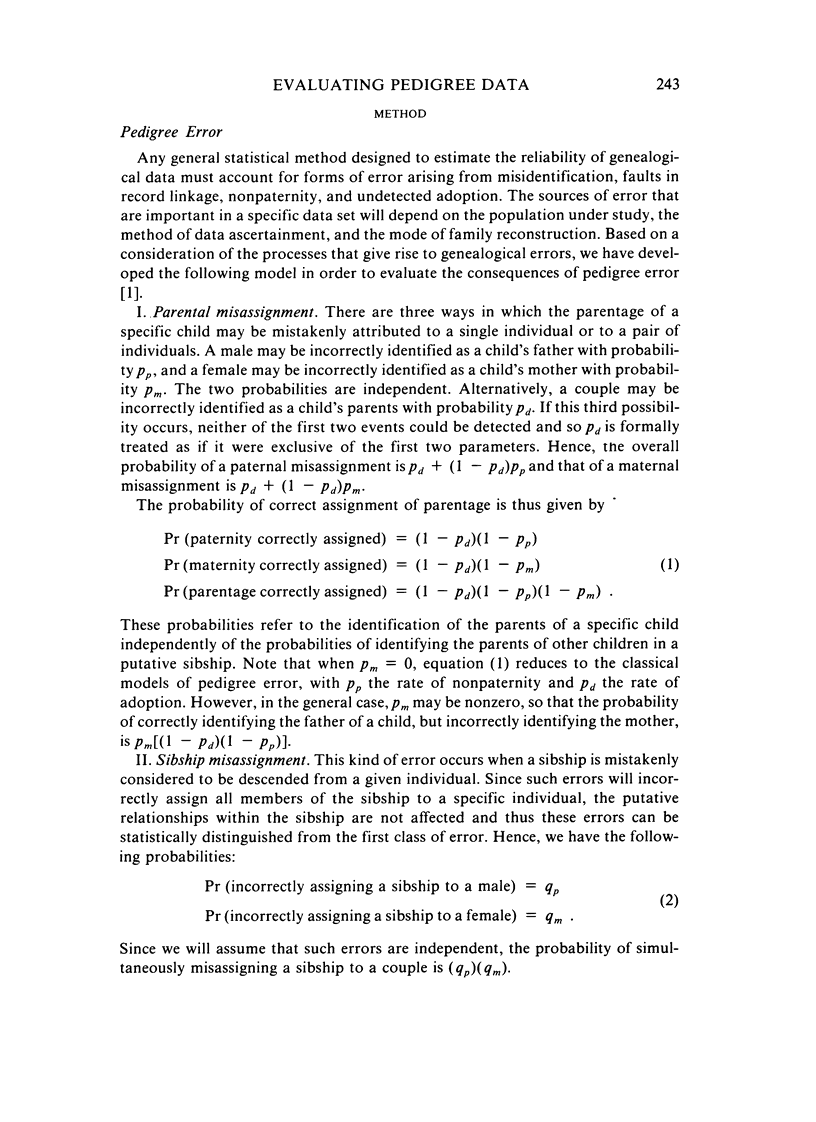
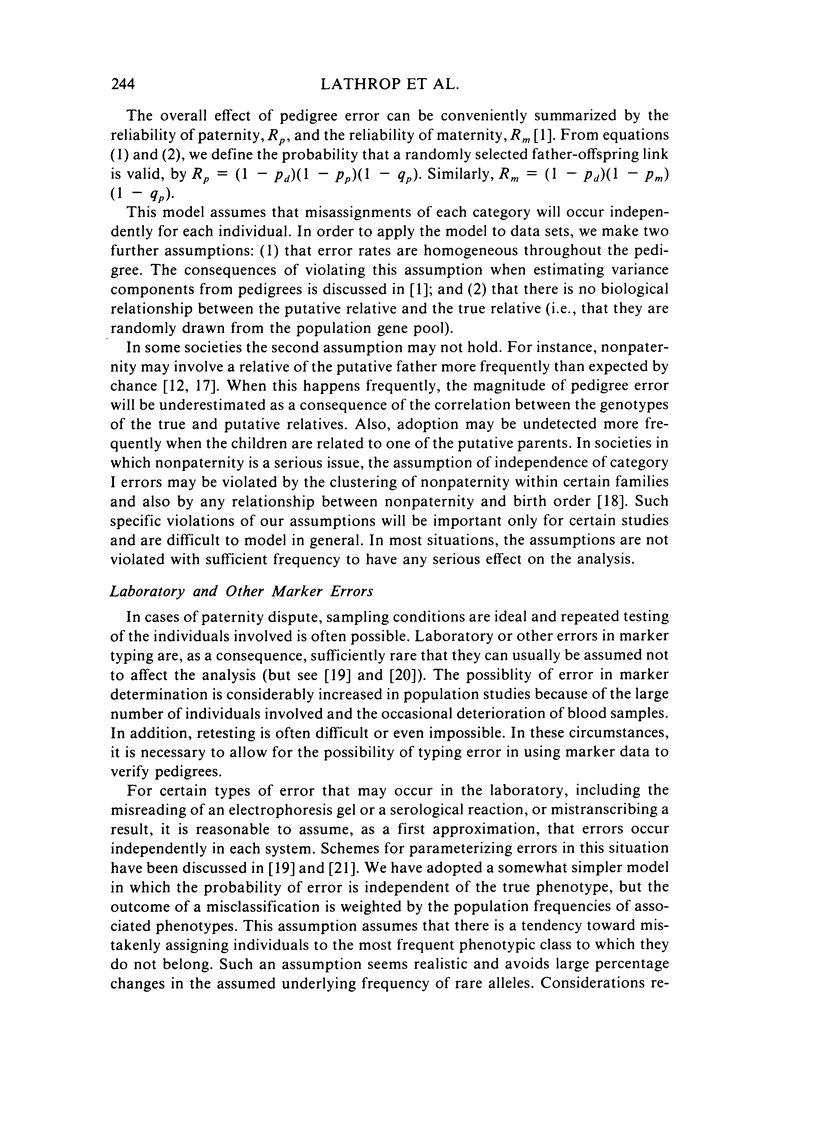
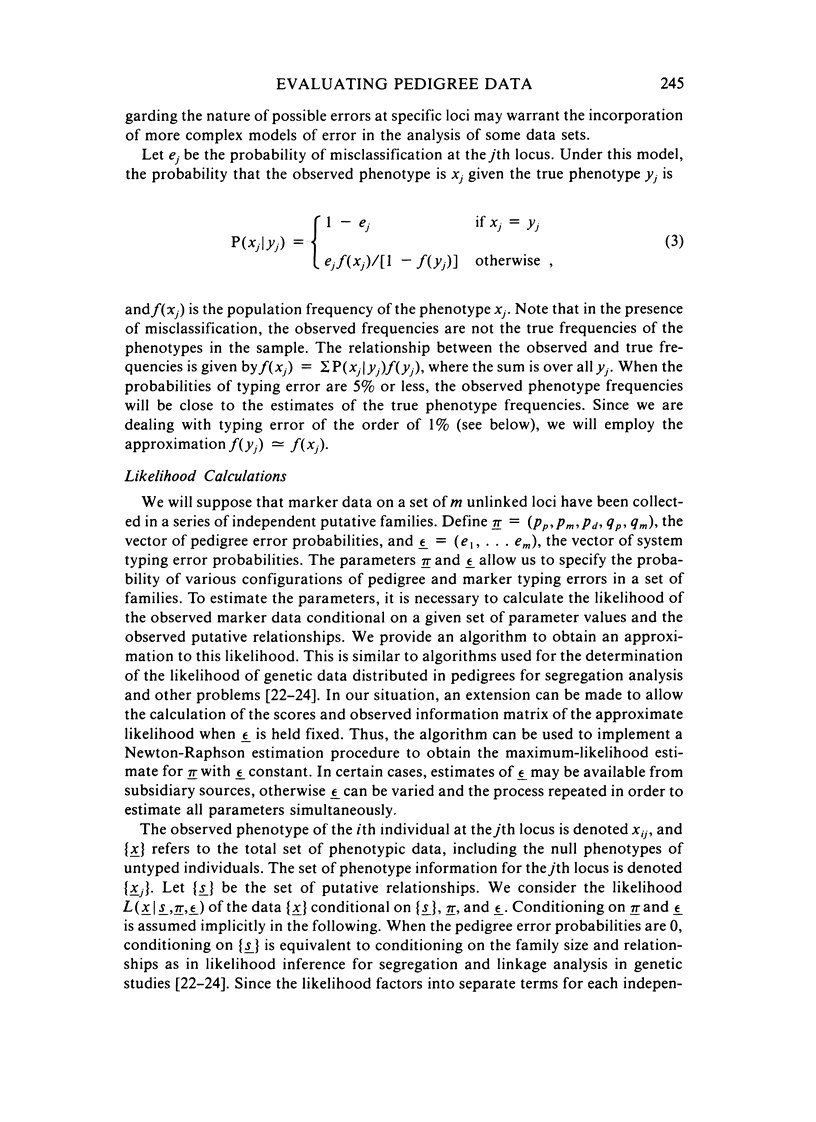
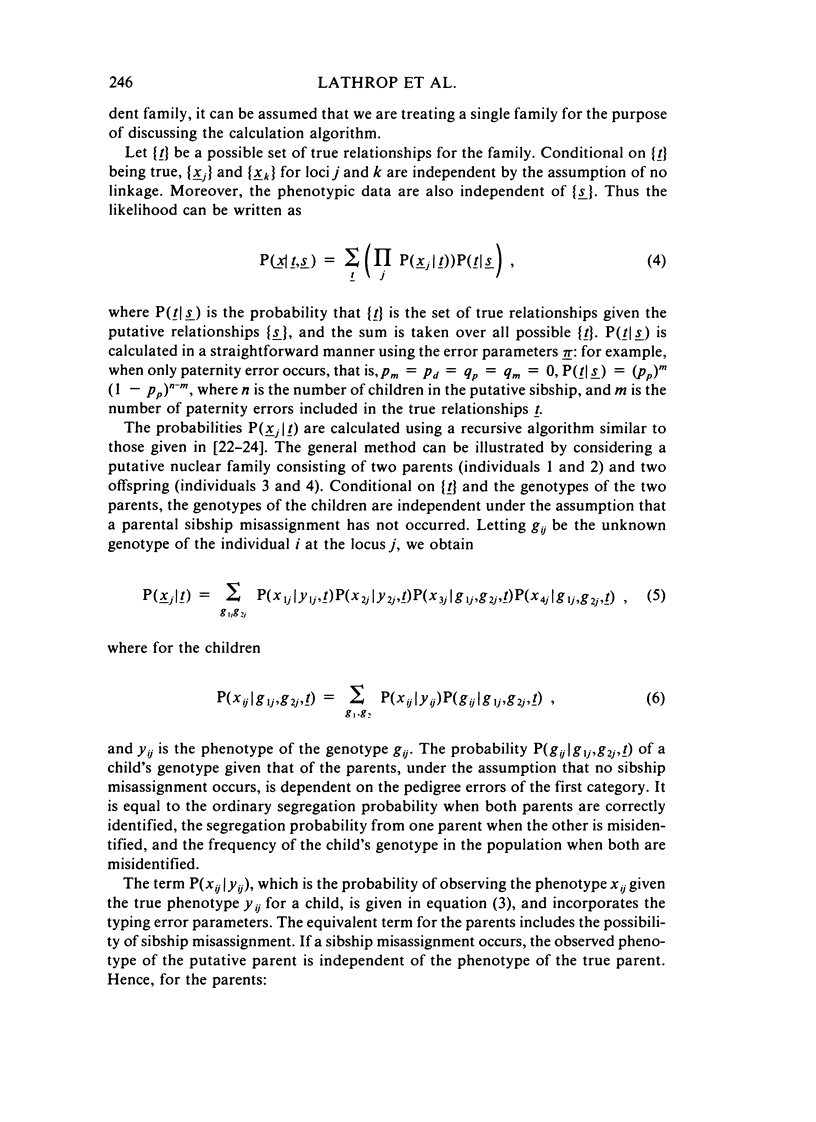
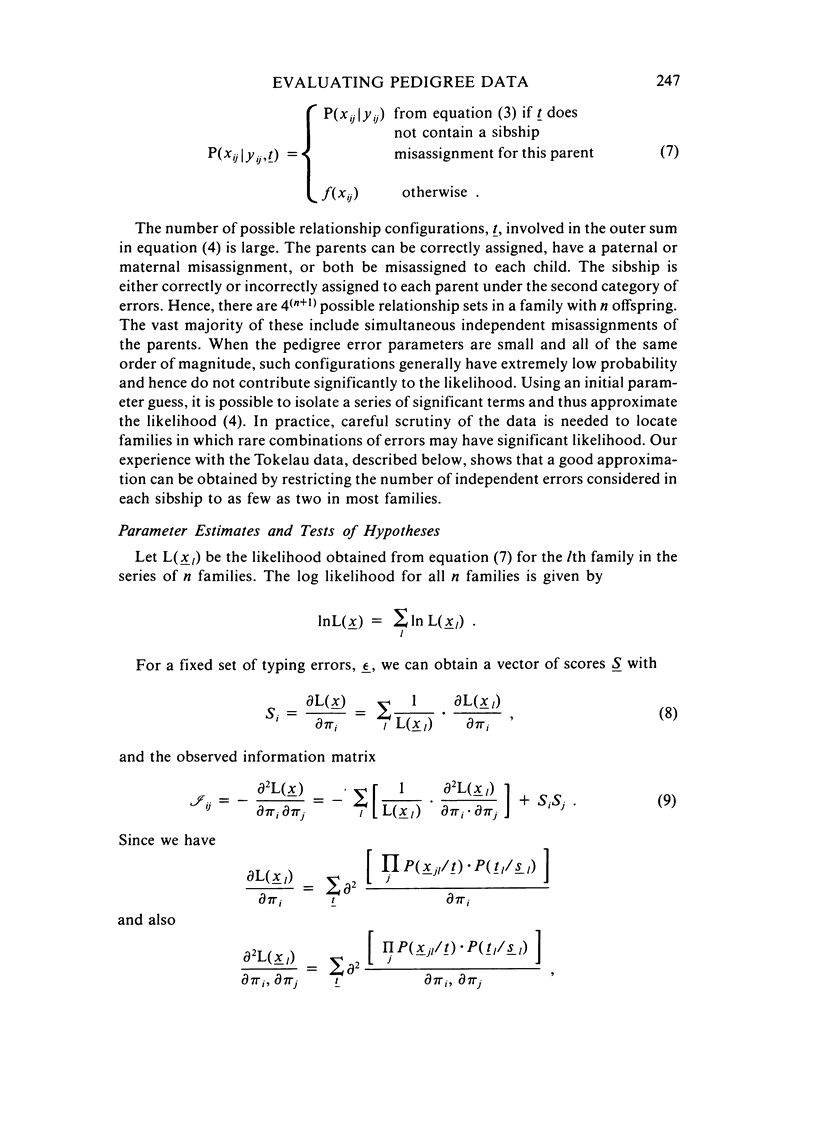
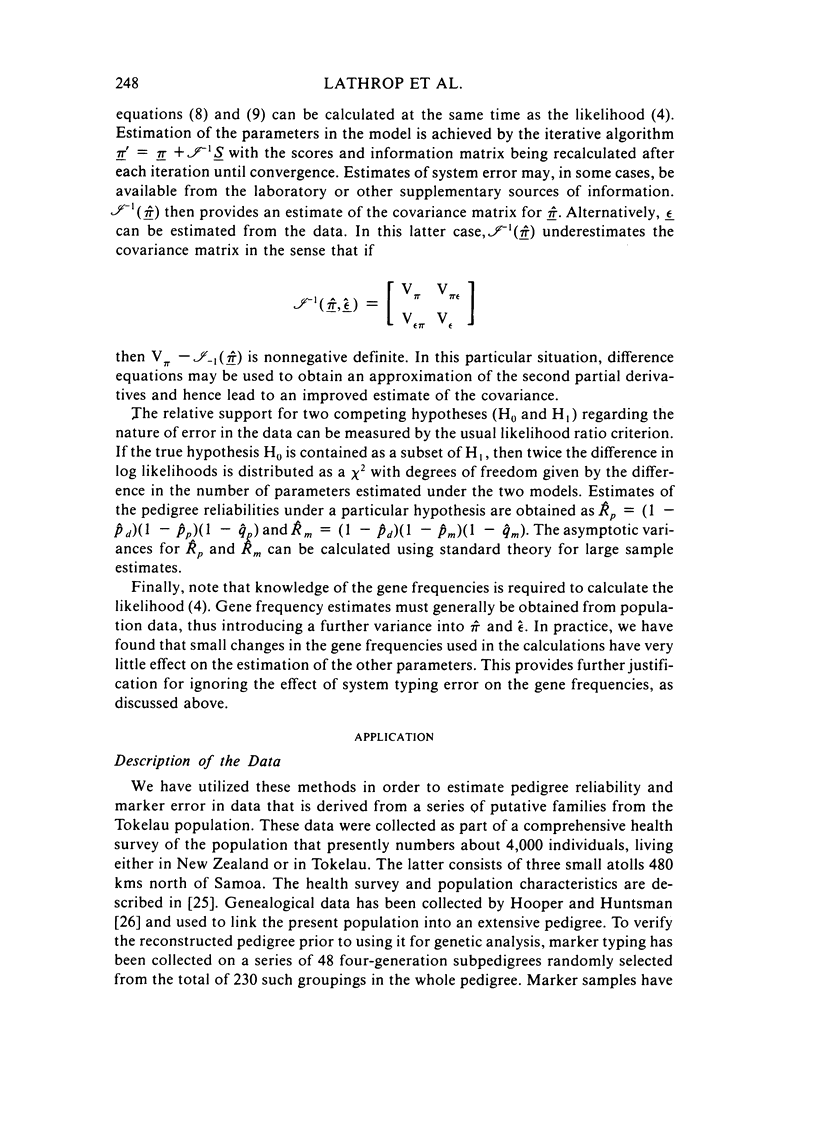
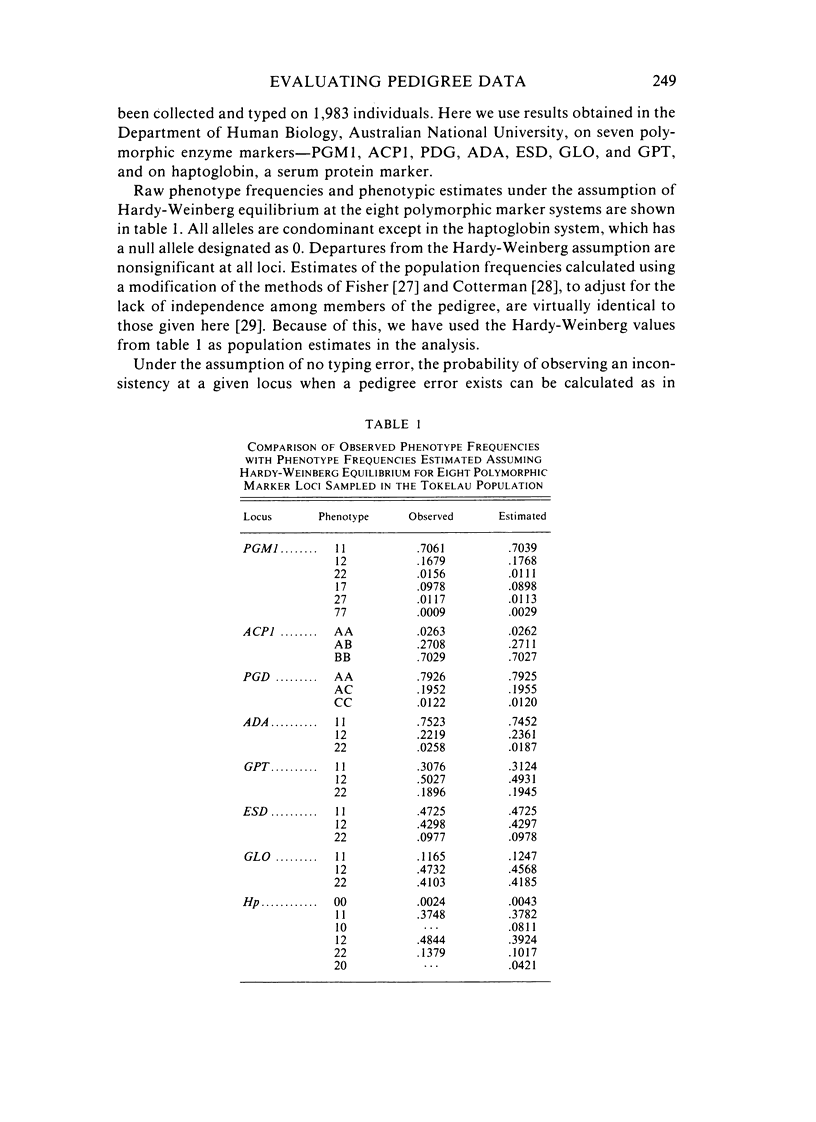
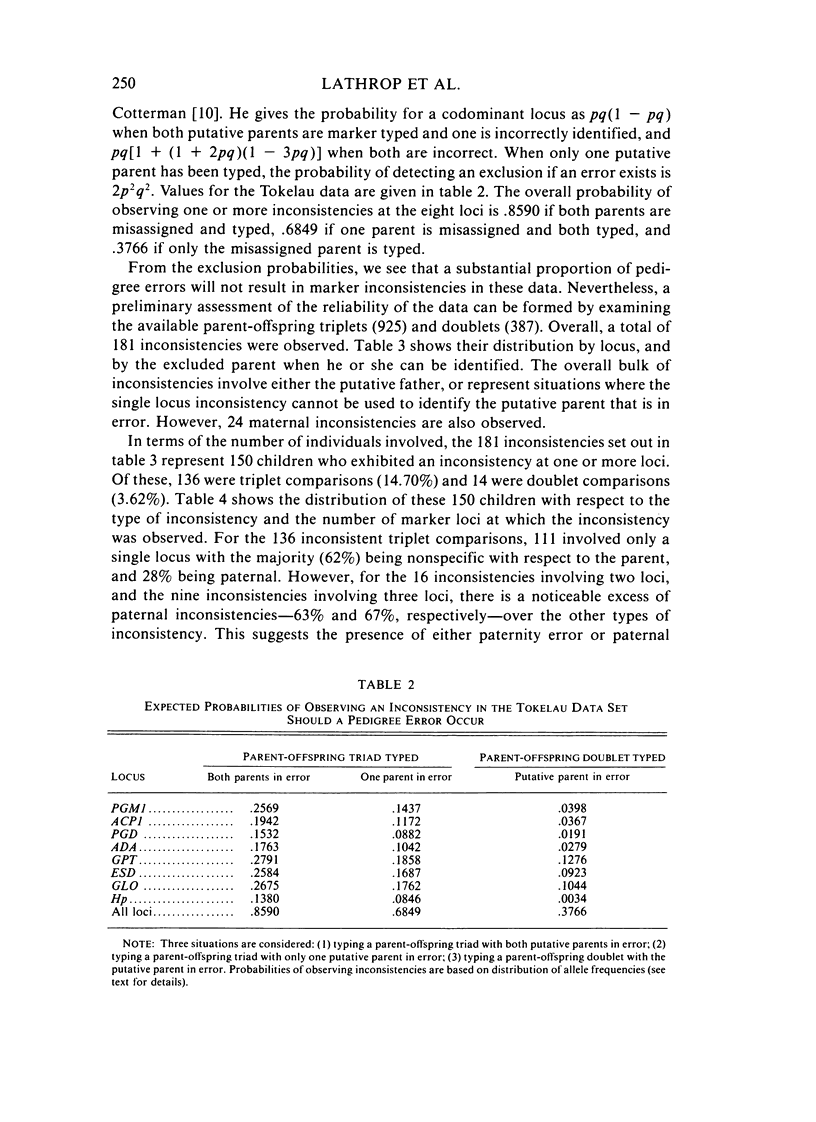
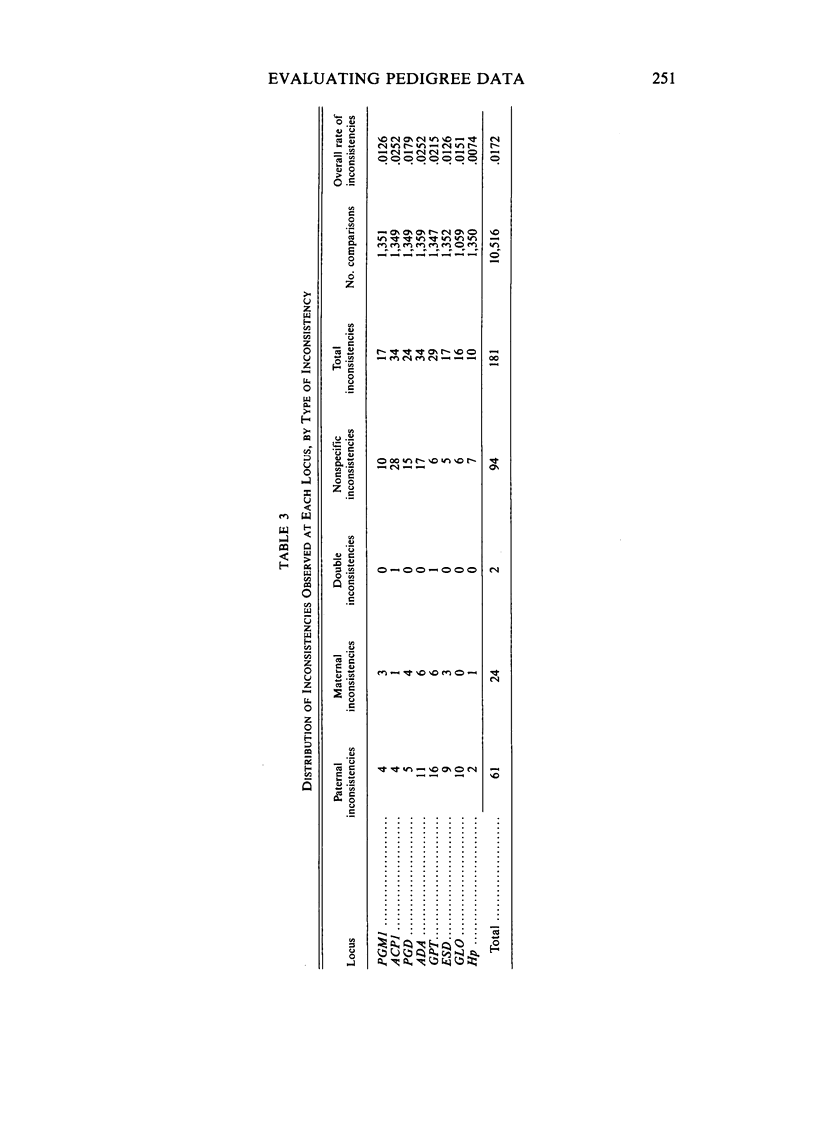
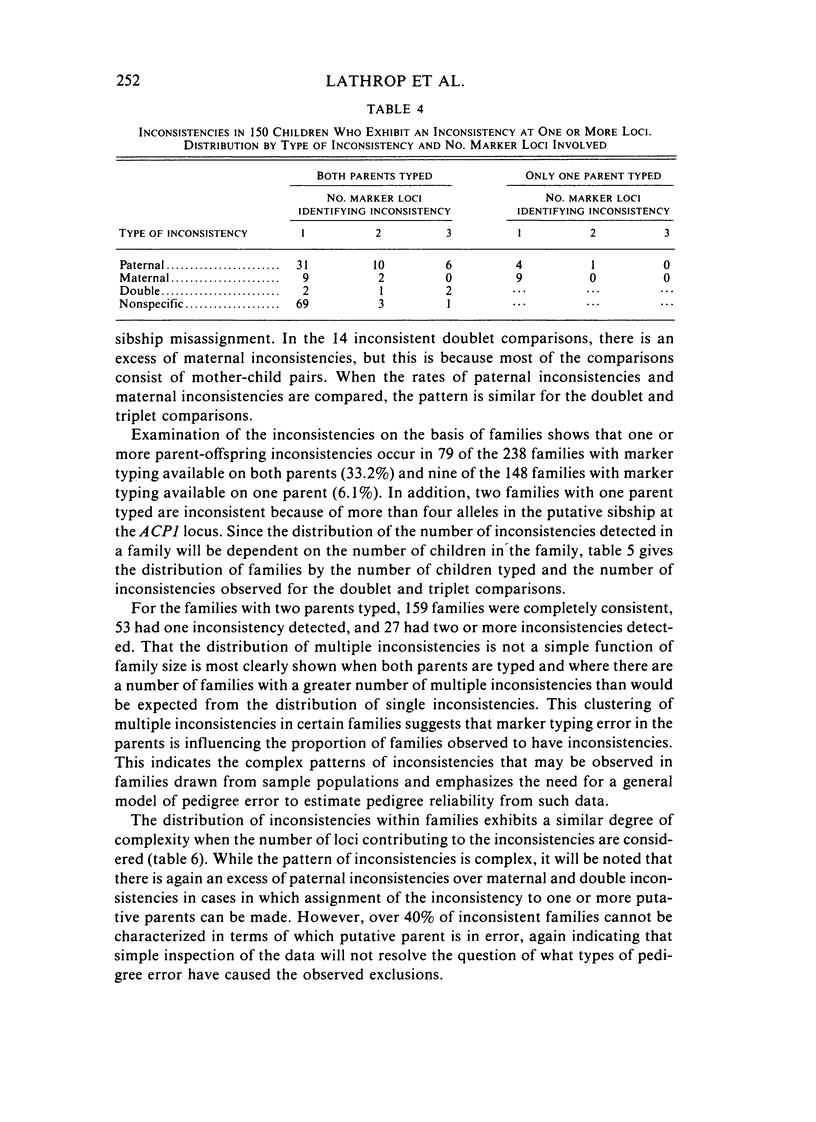
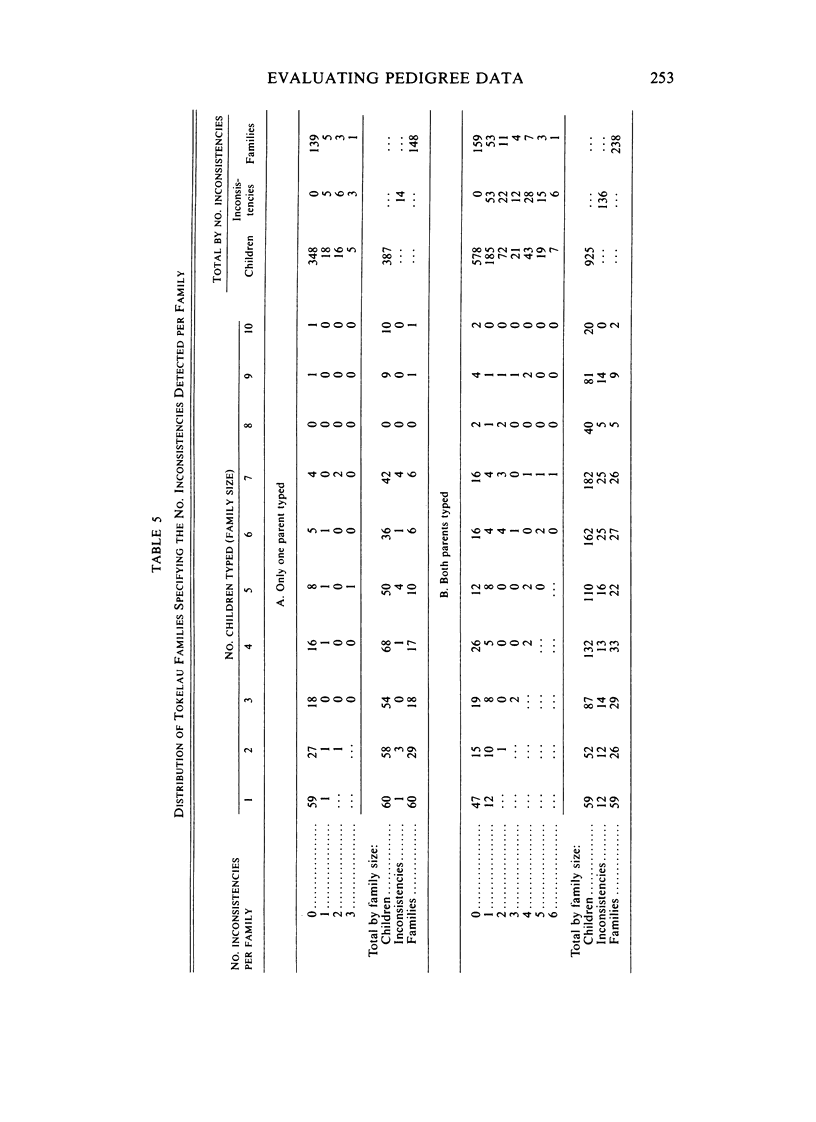
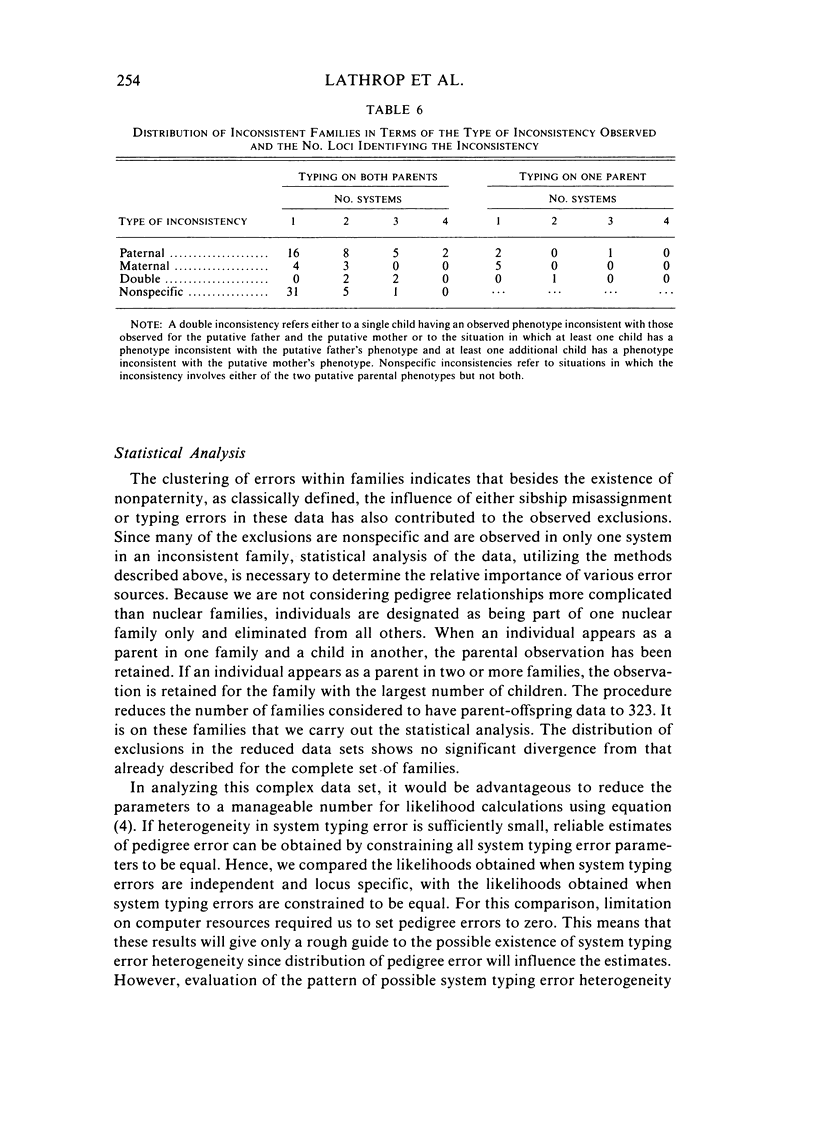
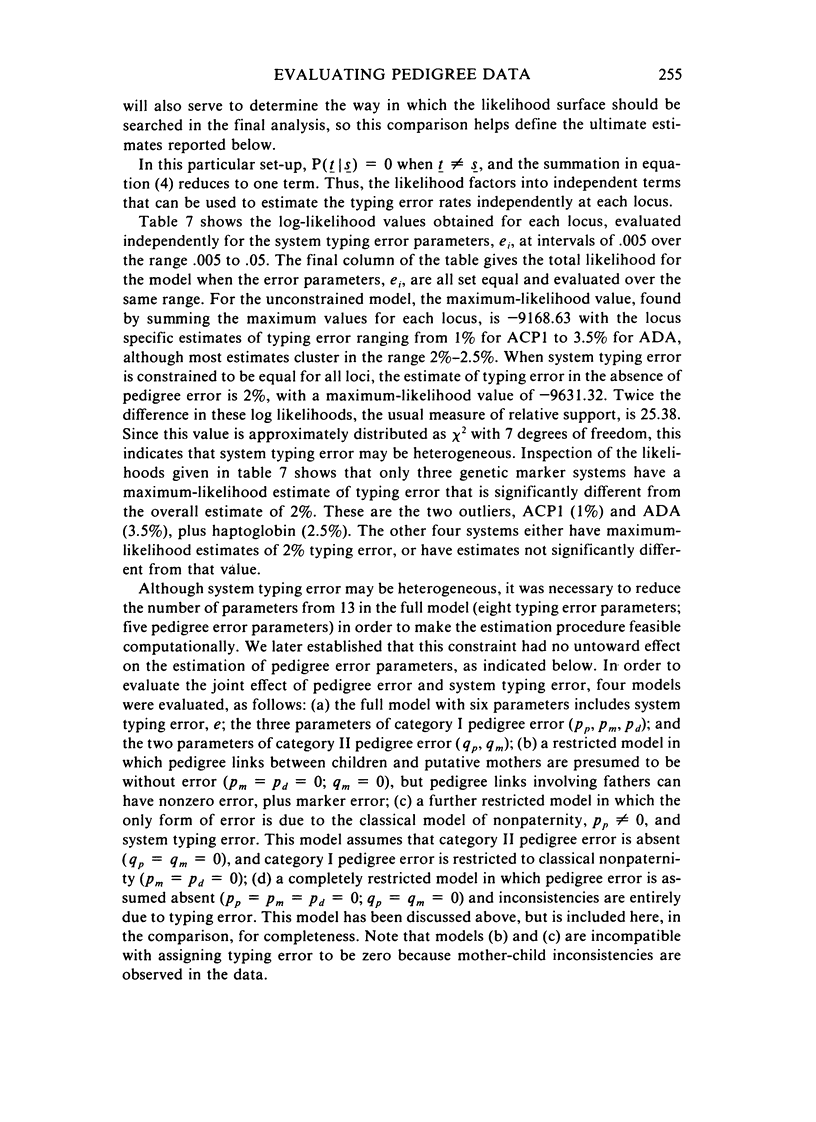

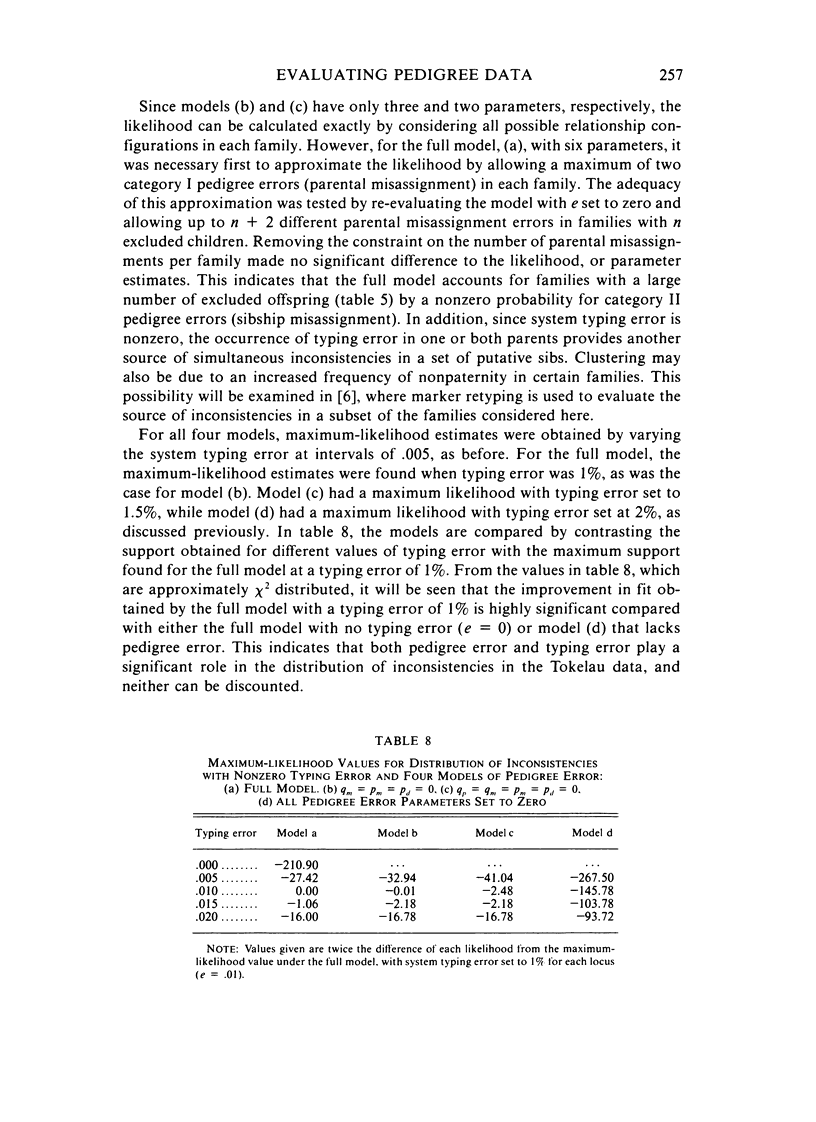
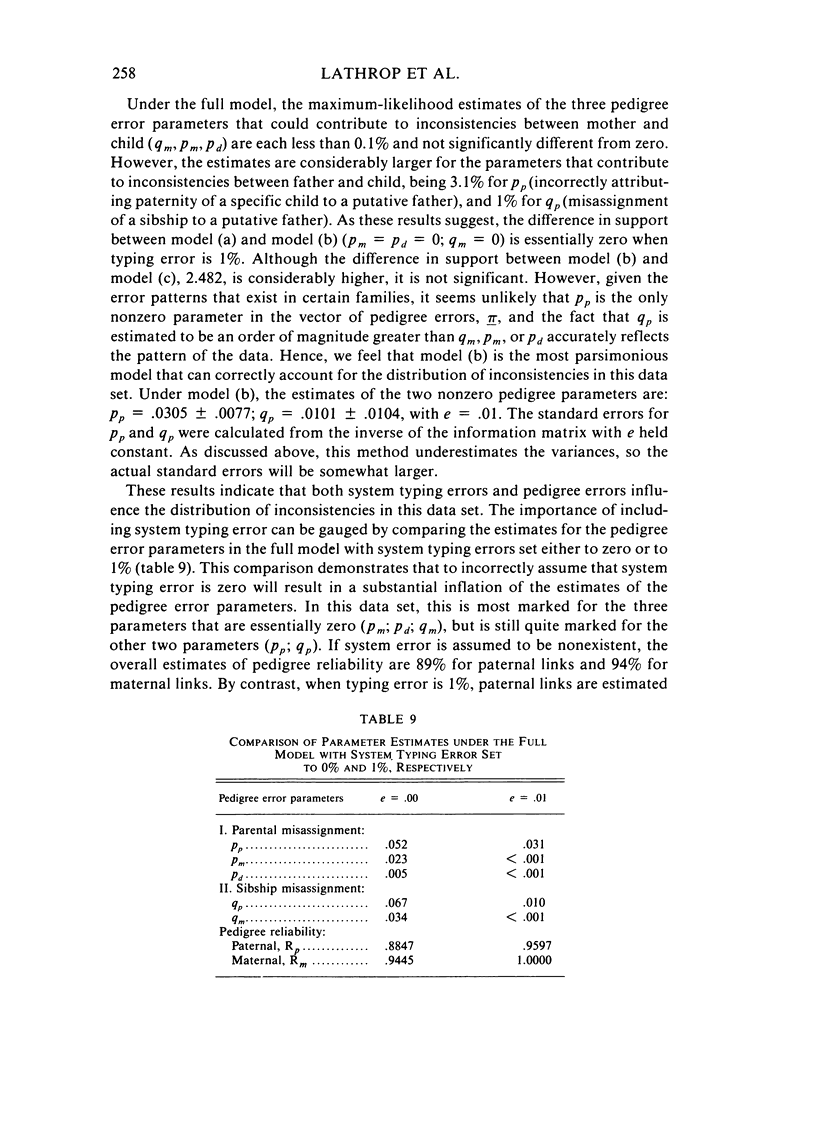
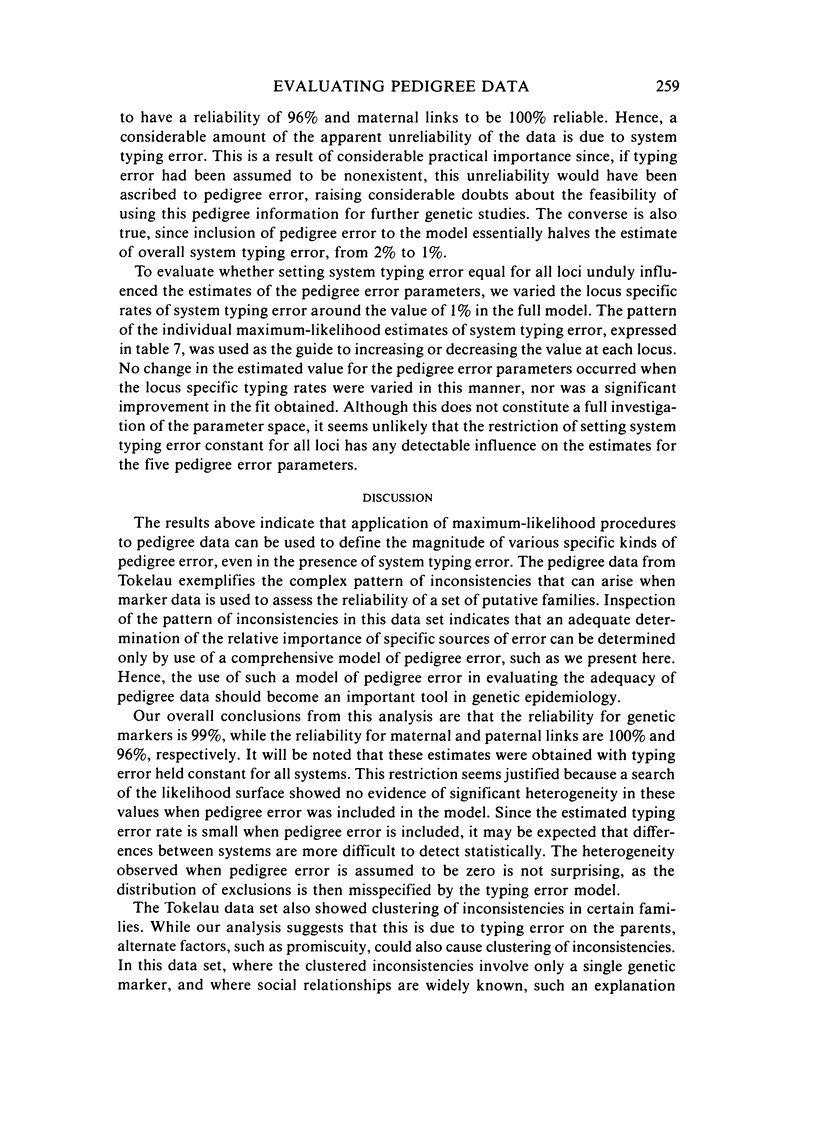
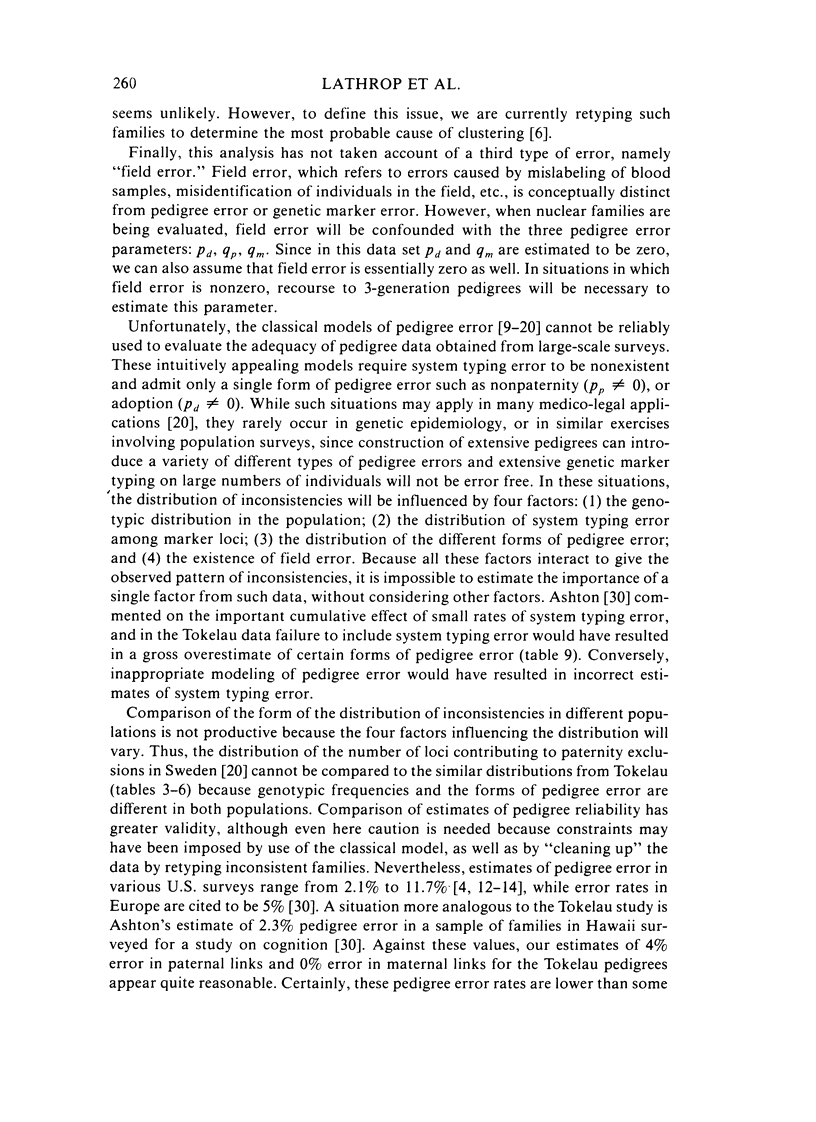
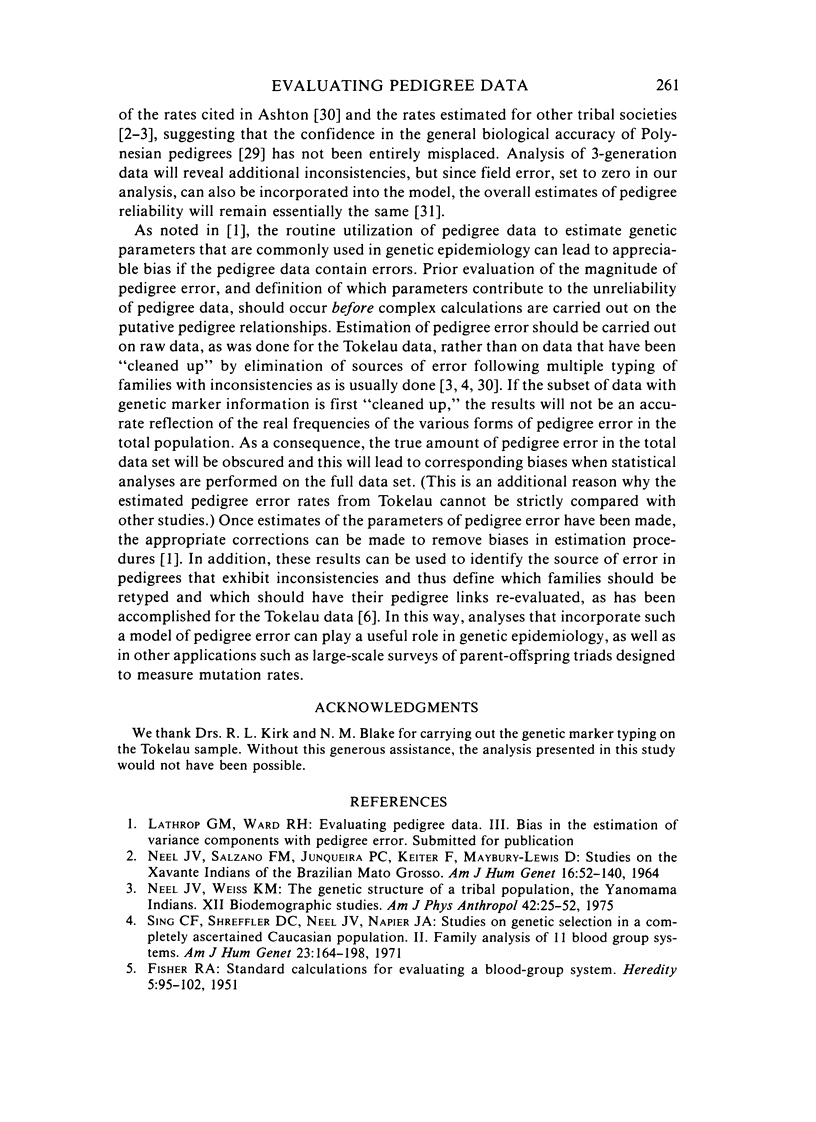
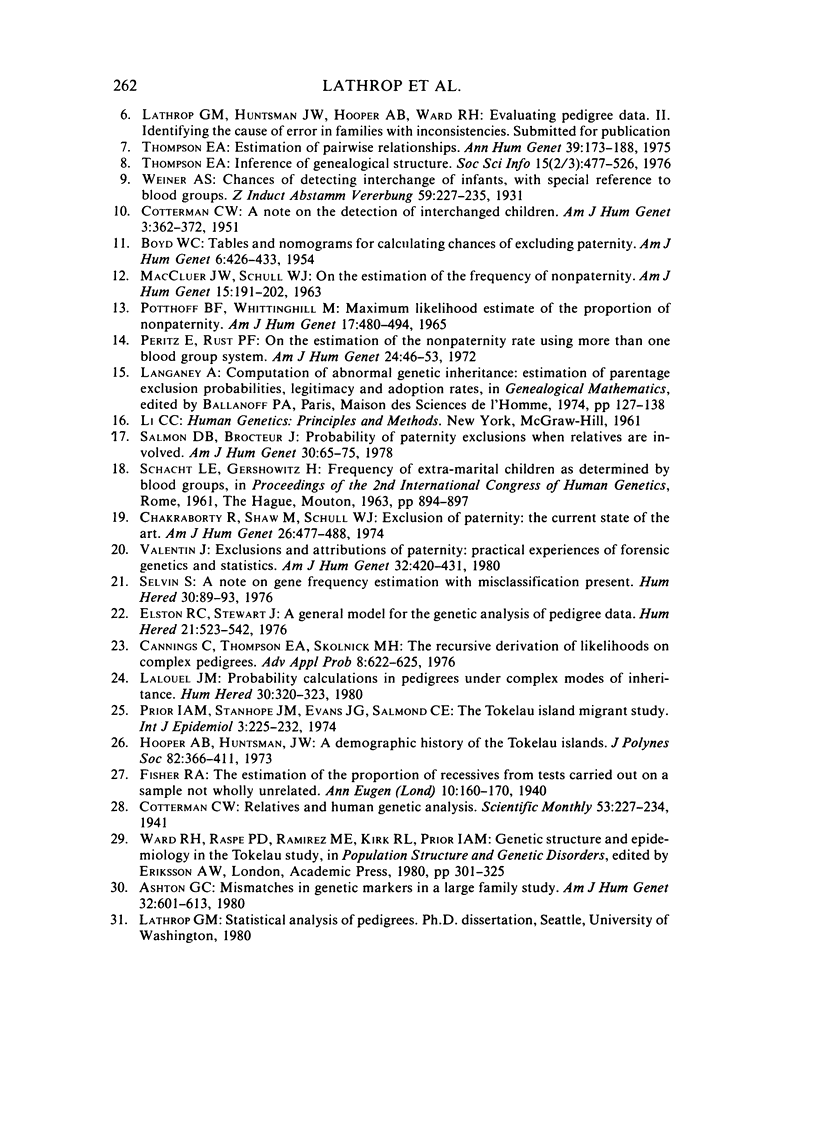
Selected References
These references are in PubMed. This may not be the complete list of references from this article.
- Ashton G. C. Mismatches in genetic markers in a large family study. Am J Hum Genet. 1980 Jul;32(4):601–613. [PMC free article] [PubMed] [Google Scholar]
- BOYD W. C. Tables and nomogram for calculating chances of excluding paternity. Am J Hum Genet. 1954 Dec;6(4):426–433. [PMC free article] [PubMed] [Google Scholar]
- COTTERMAN C. W. A note on the detection of interchanged children. Am J Hum Genet. 1951 Dec;3(4):362–375. [PMC free article] [PubMed] [Google Scholar]
- Chakraborty R., Shaw M., Schull W. J. Exclusion of paternity: the current state of the art. Am J Hum Genet. 1974 Jul;26(4):477–488. [PMC free article] [PubMed] [Google Scholar]
- Elston R. C., Stewart J. A general model for the genetic analysis of pedigree data. Hum Hered. 1971;21(6):523–542. doi: 10.1159/000152448. [DOI] [PubMed] [Google Scholar]
- FISHER R. A. Standard calculations for evaluating a blood-group system. Heredity (Edinb) 1951 Apr;5(1):95–102. doi: 10.1038/hdy.1951.5. [DOI] [PubMed] [Google Scholar]
- Lalouel J. M. Probability calculations in pedigrees under complex modes of inheritance. Hum Hered. 1980;30(5):320–323. doi: 10.1159/000153150. [DOI] [PubMed] [Google Scholar]
- Maccluer J. W., Schull W. J. On the Estimation of the Frequency of Nonpaternity. Am J Hum Genet. 1963 Jun;15(2):191–202. [PMC free article] [PubMed] [Google Scholar]
- NEEL J. V., SALZANO F. M., JUNQUEIRA P. C., KEITER F., MAYBURY-LEWIS D. STUDIES ON THE XAVANTE INDIANS OF THE BRAZILIAN MATO GROSSO. Am J Hum Genet. 1964 Mar;16:52–140. [PMC free article] [PubMed] [Google Scholar]
- Neel J. V., Weiss K. M. The genetic structure of a tribal population, the Yanomama Indians. XII. Biodemographic studies. Am J Phys Anthropol. 1975 Jan;42(1):25–51. doi: 10.1002/ajpa.1330420105. [DOI] [PubMed] [Google Scholar]
- Peritz E., Rust P. F. On the estimation of the nonpaternity rate using more than one blood-group system. Am J Hum Genet. 1972 Jan;24(1):46–53. [PMC free article] [PubMed] [Google Scholar]
- Potthoff R. F., Whittinghill M. Maximum-likelihood estimation of the proportion of nonpaternity. Am J Hum Genet. 1965 Nov;17(6):480–494. [PMC free article] [PubMed] [Google Scholar]
- Prior I. A., Stanhope J. M., Evans J. G., Salmond C. E. The Tokelau Island migrant study. Int J Epidemiol. 1974 Sep;3(3):225–232. doi: 10.1093/ije/3.3.225. [DOI] [PubMed] [Google Scholar]
- Salmon D. B., Brocteur J. Probability of paternity exclusion when relatives are involved. Am J Hum Genet. 1978 Jan;30(1):65–75. [PMC free article] [PubMed] [Google Scholar]
- Sing C. F., Shreffler D. C., Neel J. V., Napier J. A. Studies on genetic selection in a completely ascertained caucasian population. II. Family analyses of 11 blood group systems. Am J Hum Genet. 1971 Mar;23(2):164–198. [PMC free article] [PubMed] [Google Scholar]
- Thompson E. A. The estimation of pairwise relationships. Ann Hum Genet. 1975 Oct;39(2):173–188. doi: 10.1111/j.1469-1809.1975.tb00120.x. [DOI] [PubMed] [Google Scholar]
- Valentin J. Exclusions and attributions of paternity: practical experiences of forensic genetics and statistics. Am J Hum Genet. 1980 May;32(3):420–431. [PMC free article] [PubMed] [Google Scholar]


